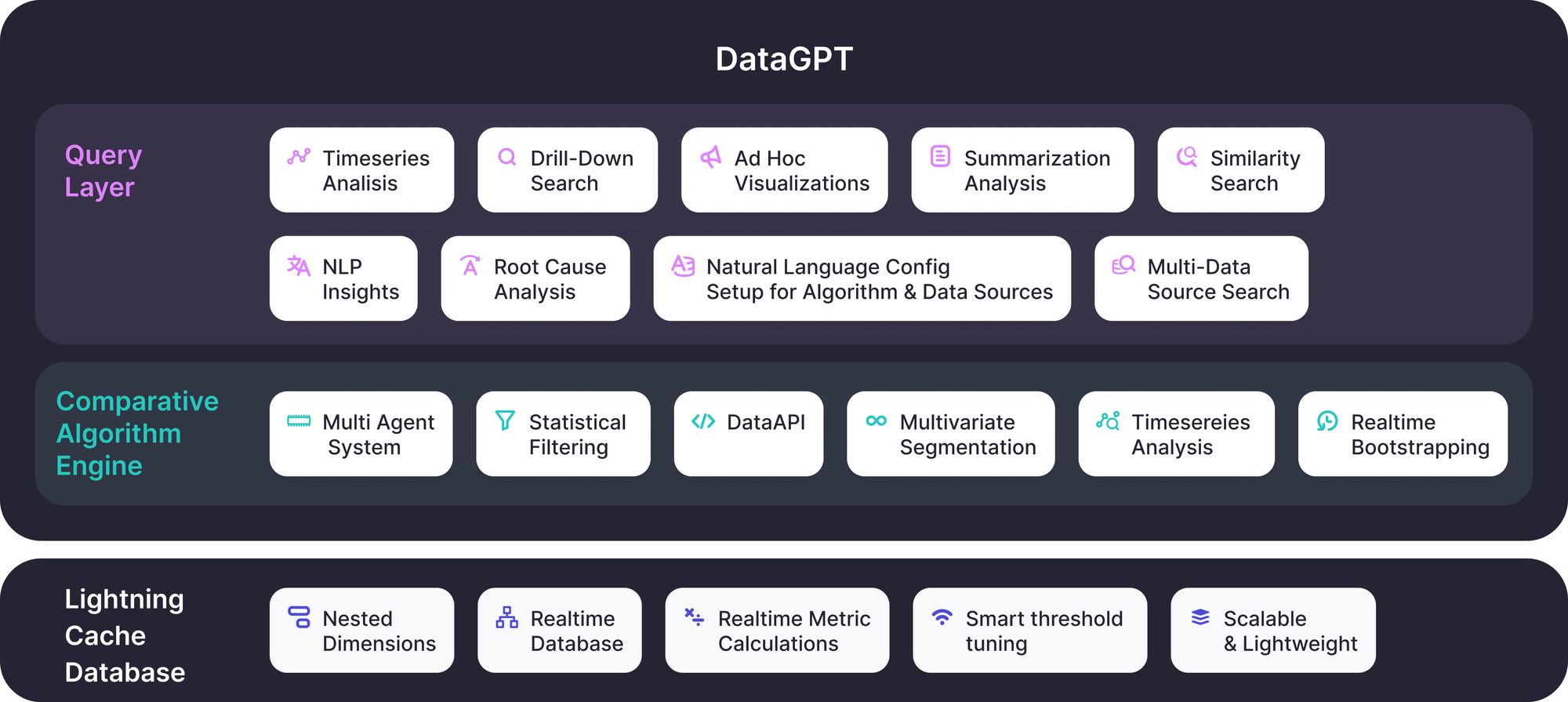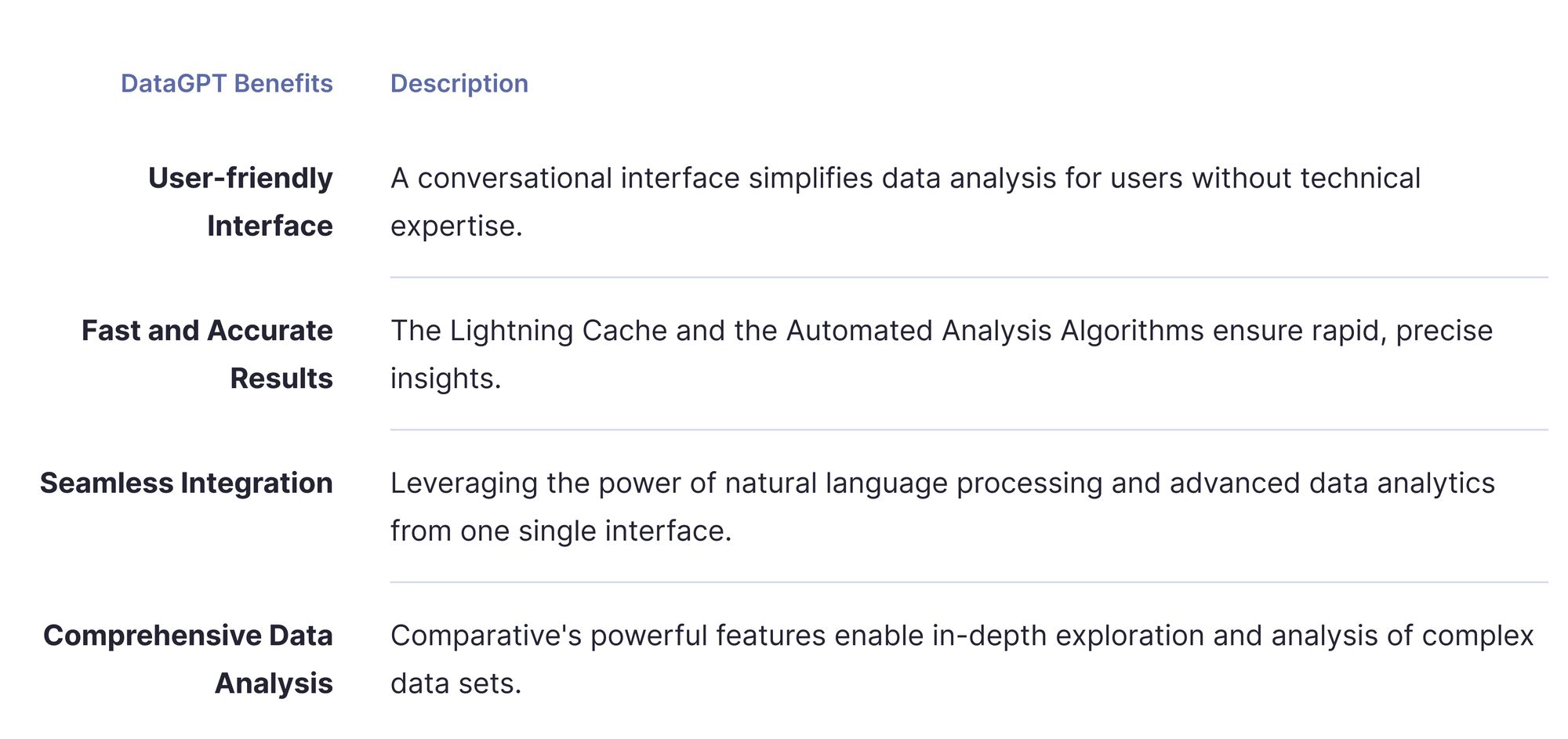Conversational Data Analysis: Cutting Through the Noise to Find the Real Deal
Many applications claim to utilize AI and ChatGPT for data analysis while only offering basic functions that are not using their full potential. So how do you sift through the plethora of tools to identify the best one for your organization?

With the rapid advancements in artificial intelligence and the proliferation of AI-powered analytics, I'm sure you've heard about ChatGPT or other Large Language Models (LLMs) being integrated into business intelligence and analytics tools. However, amidst all the buzz and excitement, there's also a great deal of misinformation and noise in this space. Many applications claim to utilize AI and ChatGPT for data analysis while only offering basic functions that are not using their full potential. So how do you sift through the plethora of tools to identify the best one for your organization?
Common approaches to using ChatGPT for data analysis
There are two common approaches to using ChatGPT for data analysis. The first is to rely on ChatGPT to perform the data analysis directly on the raw data. The second is to use ChatGPT to generate data queries in Python or SQL which are then run against the data. However, both methodologies possess inherent limitations which limit the depth and quality of the analysis. Let's look at why these limitations exists and what can be done instead to harness the power of conversational AI for data analytics.
1. Direct data analysis using ChatGPT:
To use ChatGPT to directly perform data analysis, users are required to extract, format, and upload their data to ChatGPT. Once the data is in place, users can begin asking questions or making requests using natural language. ChatGPT then interprets the questions, searches the data for relevant patterns, and analyzes the results to generate a result. However, because ChatGPT is not inherently equipped with data analysis abilities, its capacity to respond to broad or complex queries is limited, and asking open-ended questions that require advanced data analysis do not give meaningful results. This approach falls short on many fronts because:
- There are limits to the types of data formats that ChatGPT can analyze.
- ChatGPT is unable to handle large data volumes and has a strict upper limit on how much data can be analyzed. Modern organizations generate daily data volumes that easily exceed this threshold.
- Response times for data analysis queries using ChatGPT is extremely slow, even on small data sets.
- The complexity and accuracy of the results generated are limited and lack in quality compared to those generated by Data Analysts.
2. Using ChatGPT to generate data queries
An alternative approach is to leverage ChatGPT’s natural language capabilities to construct data queries based on user questions. Here users ask questions and ChatGPT translates those into queries that aim to match the user's intent. These queries are then run directly to the underlying database to extract the relevant data. This approach streamlines the data analysis process by eliminating the need for users to possess advanced technical skills in SQL or other query languages. The main drawback of this approach is that users can only ask questions that can be translated into, and then answered by, a specific data query. They cannot ask complex questions such as "How does the variation in my weekly data for Revenue correspond to my Operating cost or Total inventory?" and receive an insightful answer.
While this approach can simplify the querying process, it still lacks the depth and sophistication necessary to uncover meaningful insights, particularly with large and complex data sets because:
- Users are limited to asking direct questions.
- There is no way to answer open-ended or complex questions.
- There is insufficient depth of data exploration to find meaningful insights.
- Inaccurate results are presented if the user's intent and generated query do not exactly match.
Both approaches discussed so far have their benefits and limitations, but is a better solution possible?
What does the ideal integration of ChatGPT with data analytics look like?
A reliable and effective AI-powered data analytics solution should go beyond helping perform basic analysis. It should be capable of managing large volumes of data, allowing it to scale with the ever-growing amounts of information generated by businesses and organizations. It must be adept at analyzing complex relationships between data points to uncover hidden patterns and trends that might otherwise go unnoticed.
The solution must deliver fast and accurate results, enabling users to make timely, data-driven decisions while minimizing the risk of errors. It should employ state-of-the-art data science techniques and advanced statistical analysis to validate and verify data results, ensuring that the insights generated are both trustworthy and actionable.
It must also be accessible to users without extensive technical expertise. It should feature an intuitive interface, facilitating users to inquire about their data using direct or open-ended questions and receive comprehensive answers, helping democratize access to meaningful data insights.
Introducing DataGPT: a game changer for conversational data analysis
DataGPT ushers in a new era of AI-enabled data analytics. It merges the remarkable natural language understanding and generation abilities of LLMs with cutting-edge data analysis platform. Users can ask any type of question in natural language and have their data analyzed using DataGPT's advanced analysis algorithms. The results are presented to them in natural language making them easy to read and understand. The benefits of this approach are:
- Users can ask any type of direct or open ended-question and receive comprehensive answers.
- Users receive fast and accurate results even with large data volumes.
- Patterns, relationships, and trends in complex data are automatically surfaced within the results.
- The most impactful factors are automatically determined and highlighted.
This integrated solution provides users with a comprehensive, powerful, and easily accessible way to explore their data. They can ask specific or exploratory questions and receive insightful and precise responses in a conversational style. This approach makes data analytics accessible to all users without requiring any technical or data analysis expertise.

DataGPT reshapes the way users interact with their data, creating an engaging and intuitive experience that empowers them to make data-driven decisions based on a full understanding of their data.
Check out DataGPT here with this short demo video:
DataGPT's key platform features that make this possible
This innovation is made possible with DataGPT because of these key features of our data analytics platform:
- The Lightning Cache: A highly optimized data query engine specifically designed for data analysis, the Lightning Cache delivers rapid results without compromising on accuracy. This allows DataGPT to analyze millions of data points and deliver results instantly at a fraction of the cost of traditional data warehouses.
- Advanced Analysis Algorithms: These state-of-the-art algorithms automatically partition, segment, and check all data combinations to identify the factors that are significant and impactful to your key metrics. You no longer need to manually check multiple reports or dashboards, DataGPT cuts out the noise from your data and provides insights with unparalleled precision.
- Comprehensive API Interfaces: DataGPT's data analysis functions are all available through API interfaces that provide results for any type of data query. They can answer open-ended questions such as “Why did my revenue drop?” using DataGPT's analysis algorithms; as well as direct questions such as “How are purchases from recurring users this week?” These APIs provide the perfect integration points for natural language requests and results.

DataGPT stands out as an unparalleled data analytics solution bringing together a powerful fusion of natural language understanding with data analytics expertise. It allows users to easily explore their data by asking any type of question and receiving accurate and insightful responses that unlock its full value.
